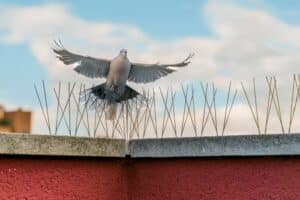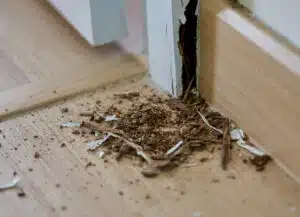At A-1 Exterminators, we’re proud to serve as true full-service pest control and extermination experts for clients throughout Utah. While many of our services focus around everything from general insects to rodents, birds and other common pests, we’re also here to help with some of the rarer or lesser-known pests out there — and a good example here is the clothes moth.
While most people are quite familiar with standard moths, which are attracted to lights and often flap around near your porch or similar areas, fewer are aware of clothes moths, which are different in a few notable ways. Here’s a primer on what clothes moths are, why they’re a risk, and what can be done to prevent them.
Clothes Moth Basics
As their name suggests, a clothes moth is a type of moth that infests various garments, carpeting and other textiles in your home. Clothes moths are often attracted to areas where there is a lot of lint, hair or other debris, as this provides them with food and a place to lay eggs.
There are two types of clothes moths that are particularly common: the webbing clothes moth and the case-making clothes moth. As their names suggest, these moths create webs or cases in which to live, and they’re both attracted to similar types of materials.
The webbing clothes moth is the more common of the two, and it’s also the type of moth that is more likely to cause damage to your clothing. This is because webbing clothes moths are able to digest keratin, which is a protein found in many types of fabrics.
The case-making clothes moth is less common, but it can still be a nuisance. This type of moth gets its name from the fact that it creates a small case or cocoon in which to live. These cases are often made from bits of fabric, lint or hair, and they can be found on clothing, upholstery or carpeting.
While clothes moths are often seen as a nuisance, it’s important to note that they can cause damage to your belongings. This is because the larvae of these moths feed on fabrics, and they’re able to digest keratin, which is a protein found in many types of fabrics.
As a result, clothes moths can cause damage to a variety of items in your home, including clothing, carpets, upholstery and even blankets or towels. If you have any items in your home that are made from natural fibers, such as wool or cotton, they may be at risk of damage from clothes moths.
Kinds of Damage
Unfortunately, clothes moths often infest the most expensive items of clothing — this is because they don’t eat synthetic fibers that are typically found in cheaper garments. As a result, if you have any items of clothing made from wool, cashmere, silk or other natural fibers, they may be at risk of damage from clothes moths.
In addition to damaging clothing, clothes moths can also damage carpets and upholstered furniture. These pests are attracted to areas where there is a lot of lint or hair, and they can quickly cause damage to these items.
Where Are Clothes Moths Found?
The most common location for clothes moths to be found is in the closet, but this is not the only place they can be found. These pests are often attracted to areas where there is a lot of lint or hair, and they can also be found in other storage areas, such as attics or basements. And if you have upholstered furniture or carpeting, they may also be found in these areas.
How to Prevent Clothes Moths
There are a few things you can do to prevent clothes moths from infesting your home:
Keep your clothing and other fabrics clean: Clothes moths are attracted to dirty fabrics, so it’s important to keep your clothing and other textiles clean. Be sure to wash or dry-clean your clothing regularly, and vacuum your carpets and upholstered furniture regularly.
Store your clothing and other fabrics properly: Clothes moths are often attracted to dark, damp and cluttered areas, so it’s important to store your clothing and other fabrics in a cool, dry place. If possible, store your clothing in airtight containers or bags.
Use mothballs or cedar chips: Mothballs and cedar chips can help to repel clothes moths. Be sure to use these products according to the manufacturer’s instructions, as they can be toxic if used improperly.
Dry cleaning: If you’re having repeated problems with clothes moths, you may want to consider dry cleaning your clothing and other fabrics. This will kill any eggs or larvae that are present, and it will also help to remove any dirt or debris that may be attracting these pests.
Removing a Clothes Moth Infestation
If you suspect you have a clothes moth infestation, it’s important to take action right away. These pests can cause serious damage to your belongings, so it’s important to get rid of them as soon as possible.
There are a few things you can do to remove a clothes moth infestation, including the use of certain chemicals. But because these can be toxic in the wrong amounts, we generally recommend calling on our team of professional exterminators to help you get rid of clothes moths. We have the experience and training necessary to safely and effectively eliminate these pests from your home, and we can also help you take steps to prevent them from returning in the future.
For more on clothes moths and how to steer clear of them, or to learn about any of our pest control or extermination services, speak to the pros at A-1 Exterminators today.



